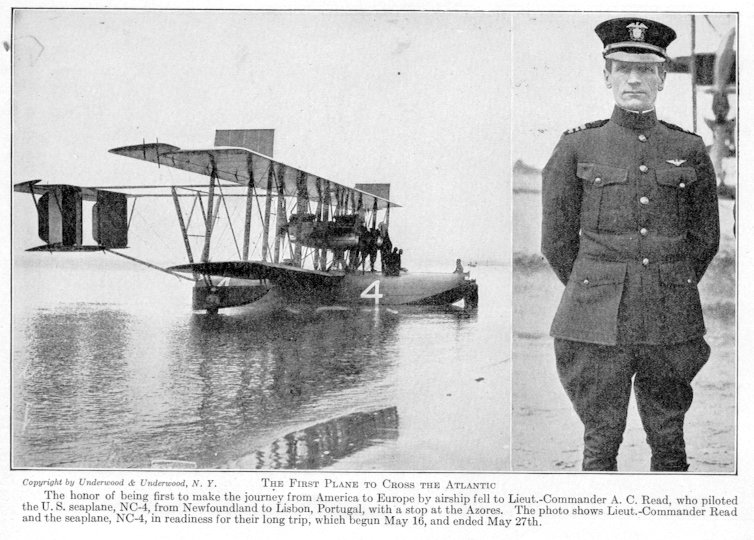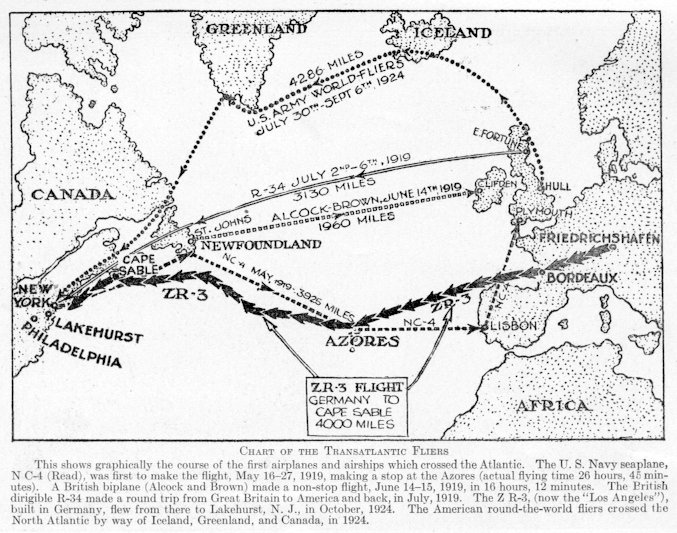Flying Across the Atlantic
Today, we think about flying across the Atlantic. The University of Houston's College of Engineering presents this series about the machines that make our civilization run, and the people whose ingenuity created them.
Dozens of people had flown the Atlantic ocean by the time Lindbergh made his historical non-stop flight from New York to Paris in 1927. The first flight was made in May 1919 from New York to Plymouth, England, in a six-man, four-engine navy flying boat. But it stopped in the Azores and Lisbon on the way. That same month, Raymond Orteig of New York City offered a $25,000 prize for the first non-stop airplane flight from New York to Paris. Just one month later, Alcock and Brown flew a two-engine airplane non-stop from St. John's, Newfoundland, to Clifden, Ireland.
In July 1919 a British dirigible flew from England to New Jersey and back. And in 1922 two Portuguese aviators, Cabral and Coutinho, flew a single-engine British seaplane from Lisbon to Rio de Janeiro. That's a longer flight than Lindbergh's, but there's a catch. The flight didn't only involve a stop -- they actually changed airplanes on a small Atlantic island.
More New York-to-England flights followed in 1924. And in 1924 a Zeppelin dirigible flew from Friedrichshaven to Lakehurst, New Jersey. Finally, in 1927, seven transatlantic heavier-than-air flights were made, of which Lindbergh's was the third.
That might lead you to wonder what was so special about Lindbergh's accomplishment. Well, it was the longest non-stop, heavier-than-air transatlantic flight, and the first solo crossing. That's how he picked up the nickname, "The Lone Eagle." And, of course, his flight finally fulfilled the conditions of the Orteig prize, which had, by then, been open for over eight years.
Prevailing headwinds made it a lot harder to fly from Europe to America. The first solo heavier-than-air flight from east to west wasn't made until 1932. The pilot's name was James Mollison, and he flew only from Ireland to New Brunswick.
And commercial transatlantic flights? Well, they had to wait until the late 1930s -- about 20 years after the first transatlantic crossing, and 35 years after the Wright brothers.
Still, Lindbergh's flight was the one that riveted the public awareness; and it's worth saying something about his airplane. Lindbergh was a determined airmail pilot who finally found a like-minded designer at the tiny Ryan airplane company. Ryan specially built the Spirit of St. Louis in just two months' time for Lindbergh. They've called him "Lucky Lindy." Maybe he was lucky for having found the right engineer at the right time.
I'm John Lienhard, at the University of Houston, where we're interested in the way inventive minds work.
(Theme music)
Angelucci, E., World Encyclopedia of Civil Aircraft: From Leonardo da Vinci to the Present. New York: Crown Publishers, 1982.
Markham, B., West with the Night. San Francisco: North Point Press, 1983 (1st ed., 1942.)
This episode has been greatly revised as Episode 1362.

(Image of transAtlantic flight in the 1923 edition of The World Book of Knowledge (probably edited subsequently))
The NC-4 airplane which made the first flight across the Atlantic.

(Image of transAtlantic flight in the 1923 edition of The World Book of Knowledge (probably edited subsequently))
A map of several Atlantic flights prior through 1924.